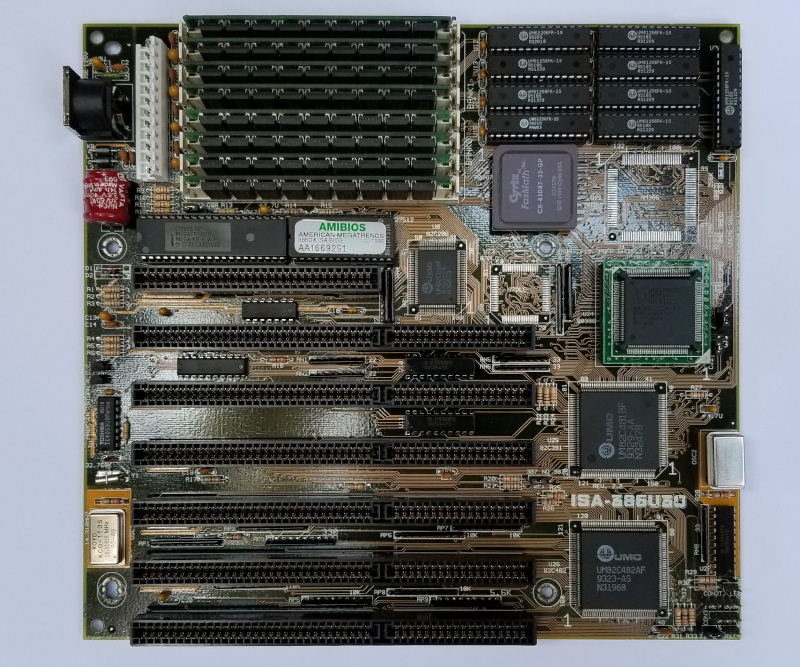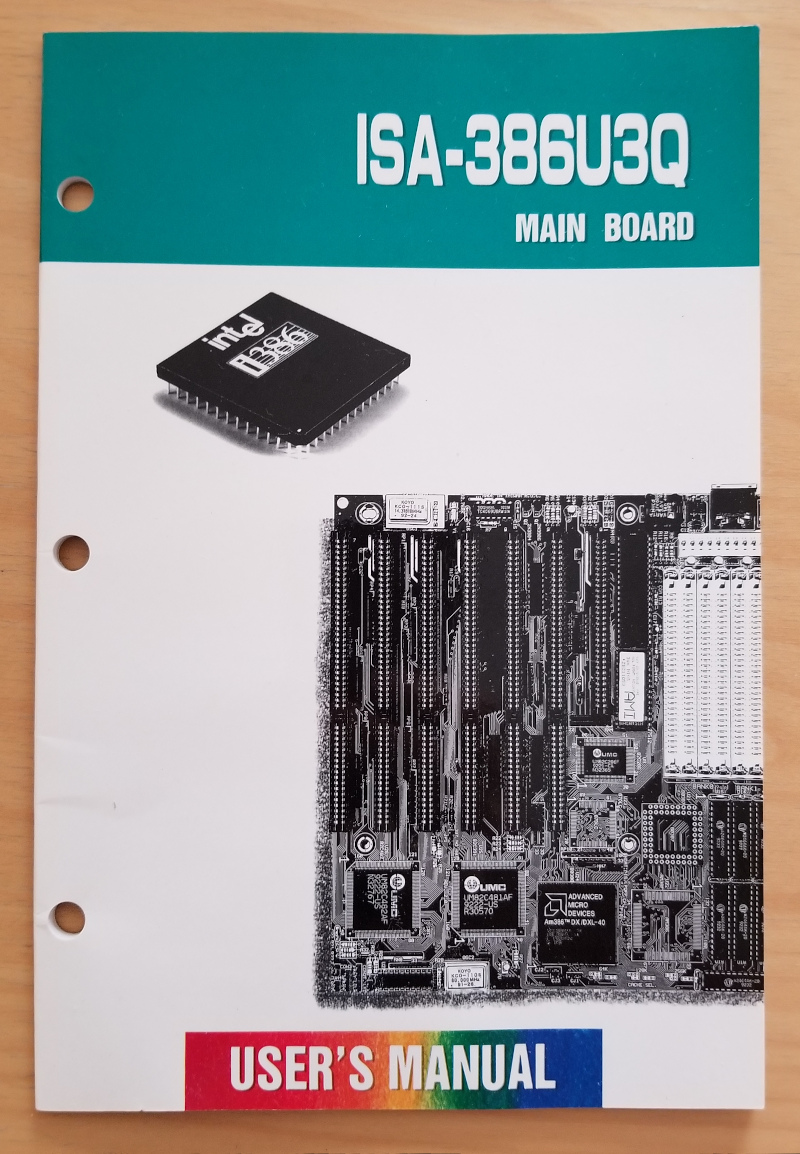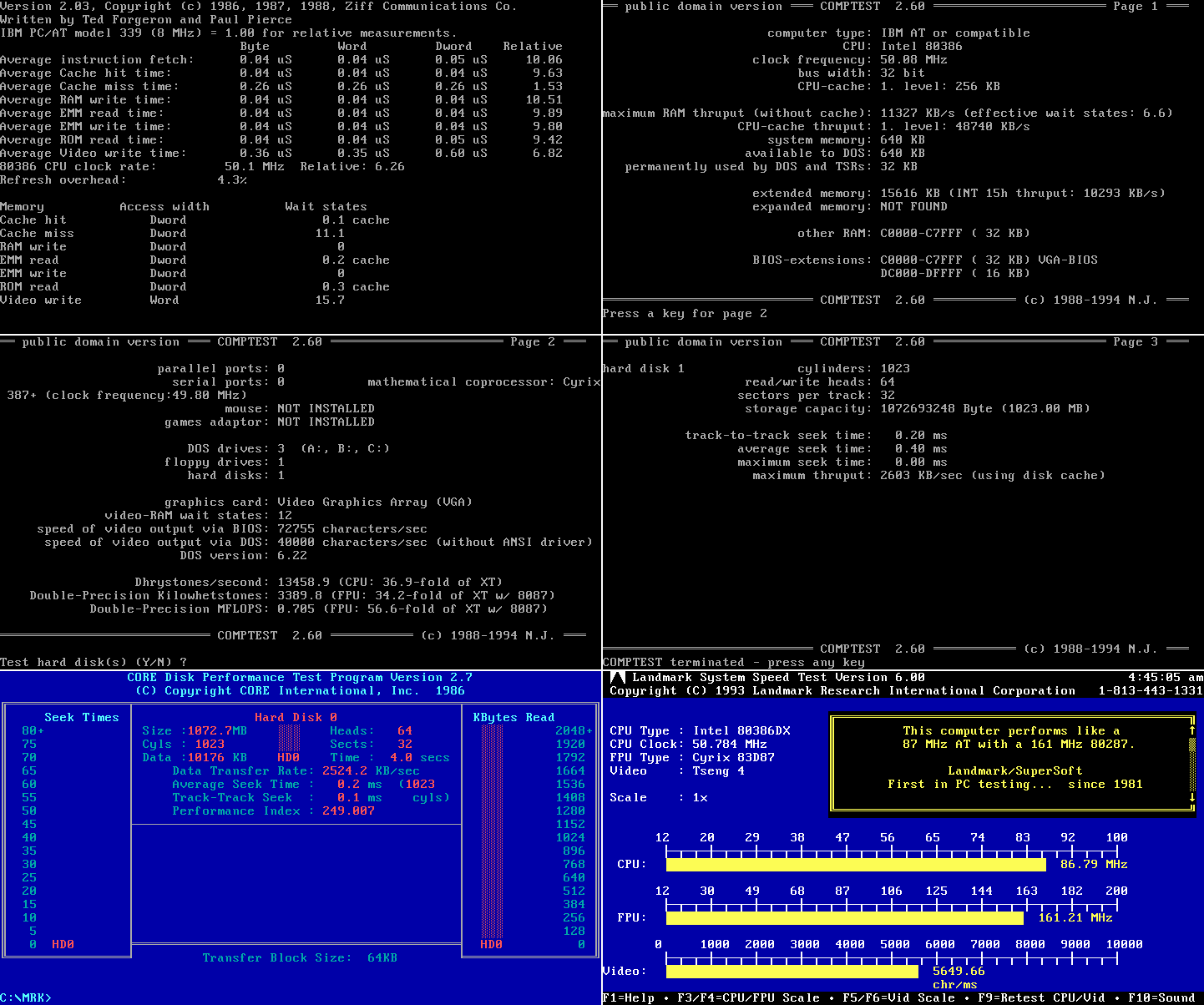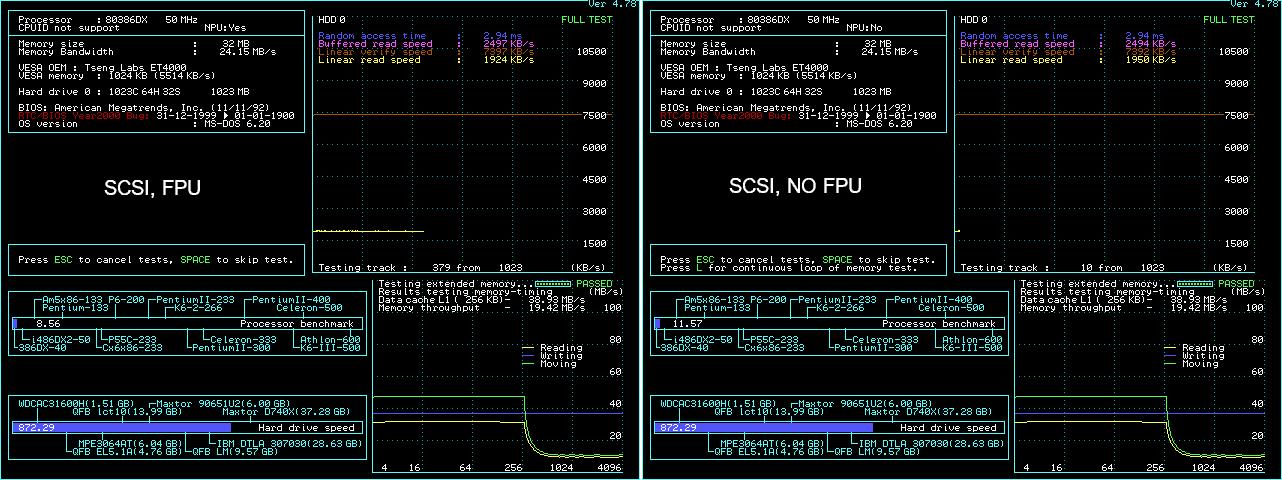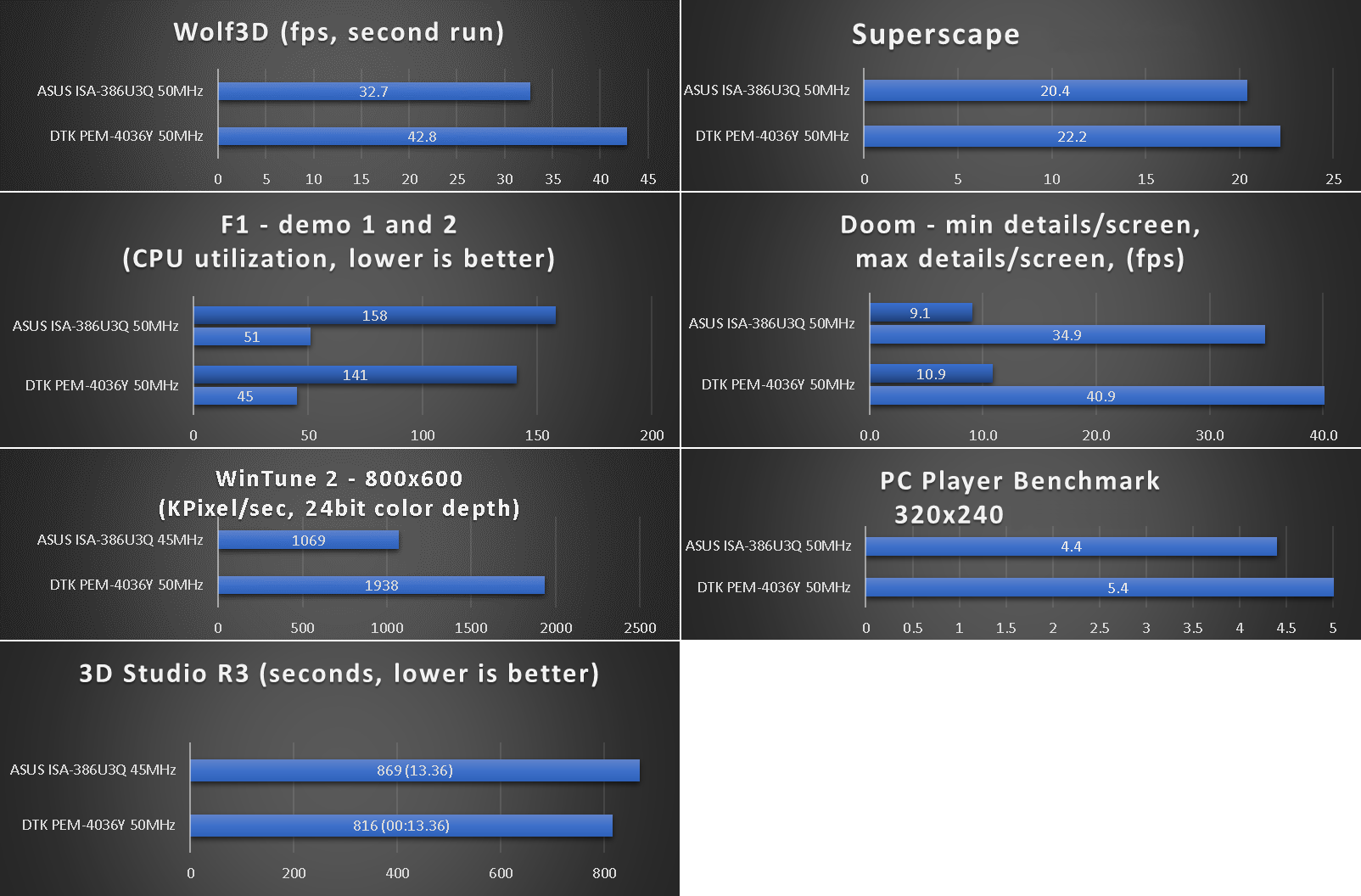Hornet Technology VL-300 - one more VLB multi-io controller with full set of interfaces - SCSI/IDE/FDC/COM/LPT.
Based on Adaptec AIC-6360L for SCSI, Adaptec AIC-25VL01Q for IDE and UMC chip for the COM, LPT, joystick, etc.
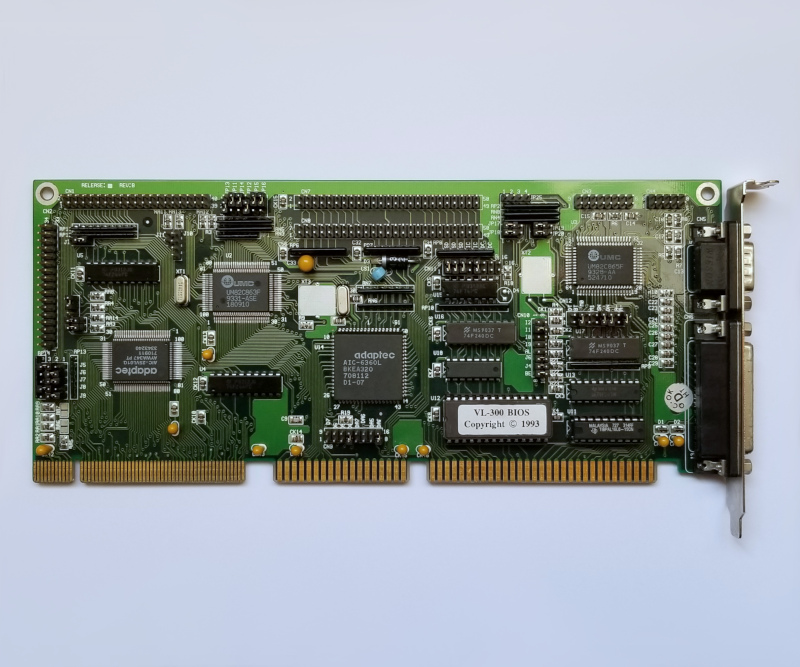
Plugged the card into that fast Asus VLI PC, but the system/PSU immediately shutdown at power-up.
Tinkered a bit with the controller. Looked for visible damage, etc. Came out clean. The device is crisp through and through.
Decided to try it in another motherboard. Used latest revision PC-Chips M919i.
Power-up and the most lower-right capacitor blew-up spectacularly - fireworks, smoke and everything.
Immediately turned off power.
Did i damage the mobo ?
Removed the controller and turned it back on - all good. Sigh.
Ok, let's try again for a moment with the controller.
Moment of terror and system lit up. Disk (CF card really) found. Boot. Back in business it seems.
Round of tests - everything checks out.
Power down. Install a replacement for the damaged capacitor. Power-up. Silence. Hmm.
Remove the capacitor - everything works. Whatever, if that's how it wants to work - so be it.
Couldn't find applicable driver for the IDE interface. Online searches don't even mention VL-300. The closest i saw was another thread on vogons for what appears to be an early version caching controller named VL-200. Drivers are incompatible.
Located the SCSI driver right away.
Unfortunately performance is disappointing for both IDE and SCSI. Tested in the Asus VLI PC.
IDE hits 1854Kb/s in Coretest, ~1750Kb/s buffered read and linear read speed in SpeedSys.
SCSI climbs a bit higher - 2722Kb/s in Coretest, 2587Kb/s in buffered read speed and 2353 leaner read speed in SpeedSys. Without a driver SCSI performance drops to below 1Mb/s. So the driver does something, but nearly not enough.
There are plenty of jumpers on the controller, but couldn't find a manual online.
Spent good amount of time testing different combinations. Discovered most of the settings by trial and error. Nothing affects performance. Of course, there is a chance i missed some magical combination.
Added this guy to the charts in the VLB SCSI/EIDE controllers post.

